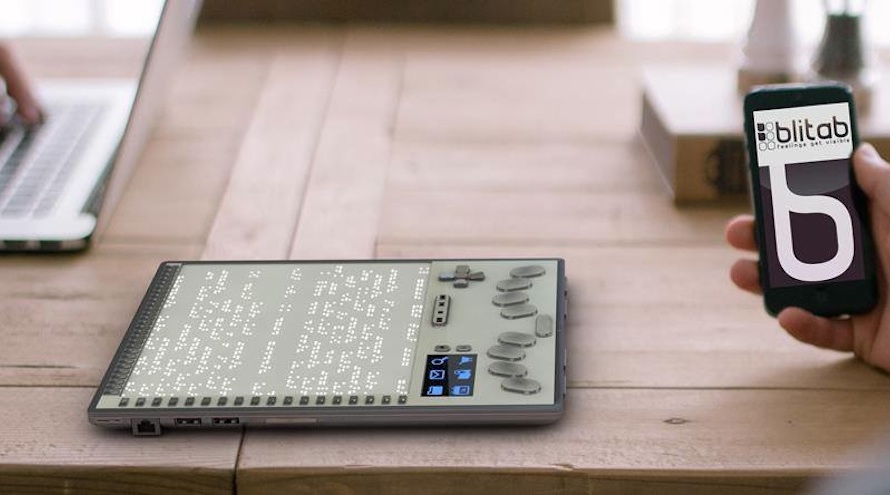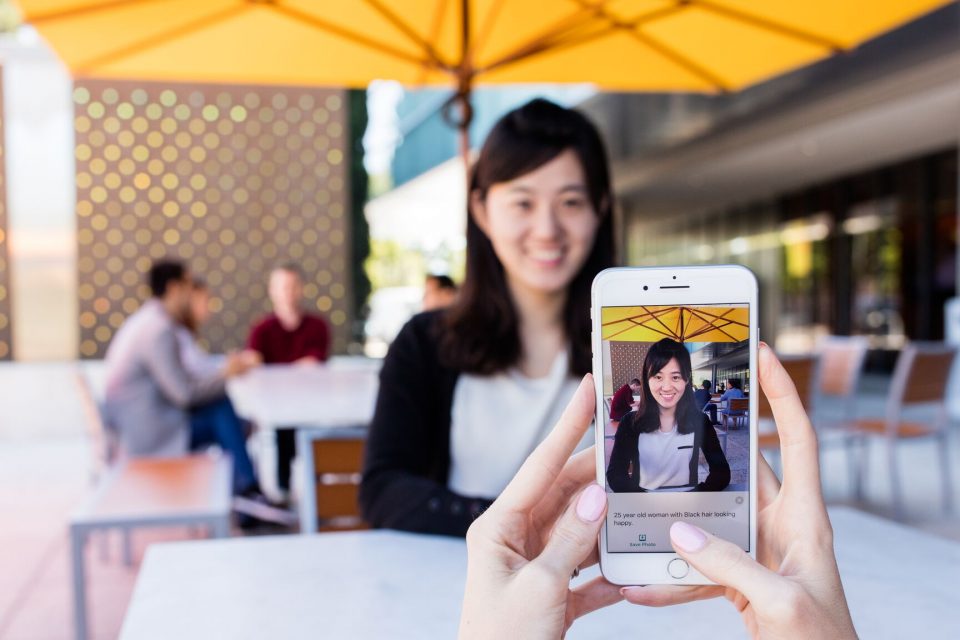Voice-Activated Assistive Devices: Simplifying Everyday Tasks
Discover Ingenious Tools Created for the Visually Damaged
The growth of cutting-edge devices for the aesthetically damaged represents a significant advancement in ease of access and independence. Technologies such as wise glasses with AI capabilities and mobile applications made to offer acoustic summaries are reshaping daily experiences for users.
Smart Glasses for Navigating

Smart glasses created for navigating are transforming the method visually impaired individuals connect with their environment. These sophisticated tools make use of a combination of cam modern technology, expert system, and acoustic feedback to give real-time info regarding environments. By employing challenge discovery systems, wise glasses can signal customers to potential hazards, enabling much safer flexibility in both familiar and strange settings.
The integration of GPS technology better improves navigation capacities, permitting customers to obtain auditory instructions as they relocate. This hands-free method not just fosters freedom yet also encourages aesthetically impaired people to browse urban landscapes with boosted confidence. Furthermore, several smart glasses are furnished with functions that determine spots and street indications, offering contextual information that boosts the customer experience.
In addition, the growth of these gadgets is consistently advancing, with business functioning to enhance the accuracy of object recognition and increase the series of navigational functions. As smart glasses come to be more economical and available, they hold the possible to dramatically change everyday life for visually impaired customers. Ultimately, these innovative tools stand for an important action towards inclusivity, offering enhanced mobility and a higher feeling of freedom for individuals navigating the world around them.

Mobile Apps for Daily Living
Just how can mobile applications boost the day-to-days live of aesthetically impaired individuals? Mobile applications are changing the way visually damaged customers browse their settings, take care of daily tasks, and accessibility information. These applications give crucial support via numerous functionalities, cultivating self-reliance and improving lifestyle.
A number of ingenious mobile applications are designed particularly for day-to-day living. As an example, applications like Be My Eyes connect visually damaged customers with sighted volunteers using video calls, allowing them to get real-time assistance with tasks such as reading labels or navigating unknown areas. In A Similar Way, Seeing AI, established by Microsoft, makes use of man-made knowledge to explain surroundings, reviewed message, and identify objects, efficiently transforming a smartphone into a powerful tool for everyday aid.
In addition, navigation apps tailored for the visually damaged, such as Aira and BlindSquare, supply audio-based instructions and ecological details, making it possible for customers to traverse their environments securely and with confidence. Beyond navigating and immediate assistance, mobile applications additionally sustain organization and task administration, with functions that aid individuals establish reminders, produce order of business, and track visits. In recap, mobile applications act as indispensable sources, equipping visually damaged individuals to lead more independent and satisfying lives.
Wearable Technologies for Assistance
Empowerment via technology is significantly evident in the world of wearable gadgets made to aid aesthetically damaged people. These ingenious devices incorporate flawlessly into every day life, improving navigation and providing important comments to individuals. As an example, smart glasses geared up with video cameras can recognize faces and read message out loud, allowing customers to communicate even more with confidence in social and expert setups.
One more notable innovation is making use of haptic responses systems in wearable tools. These systems use vibrations or other responsive signals to share details concerning the customer's setting, such as challenges or modifications in surface, enhancing mobility and safety and security. Wearable technologies additionally include wristbands that link to smartphones, informing individuals to notices via subtle resonances, thus improving connection without dependence on visual cues.
As these technologies remain to evolve, they are not just Web Site enhancing independence for aesthetically impaired people but likewise promoting a greater sense of inclusion in culture. By bridging the gap between obstacles dealt with in daily living and the possibility for autonomy, wearable innovations function as crucial devices in the pursuit for equality and empowerment for those with aesthetic impairments.
Audio Summary Tools
Sound summary tools play an essential function in improving accessibility for aesthetically damaged people, offering them with the ability to involve with visual media. Wearable technology for low vision. These tools provide narrated summaries of vital visual elements in movies, tv shows, and live efficiencies, making certain that users can fully comprehend the context and emotions conveyed with visuals
Audio description can be integrated right into different platforms, including streaming services, cinema screenings, and live theater. Numerous eye appt popular streaming services now include audio summary as an ease of access attribute, permitting viewers to choose it easily. Along with traditional media, specialized applications additionally exist, supplying audio descriptions for art exhibits, galleries, and various other cultural events.
The performance of audio summary rests on the ability of the storytellers, who must convey aesthetic details succinctly without diminishing the initial audio. Technologies in this field are also leading the way for more customized experiences, where individuals can change the degree of detail and pacing according to their choices.
Braille Innovations and Gadgets
Braille innovations and tools have significantly changed the means visually impaired people connect with text and info. Modern innovations have led to the development of versatile tools that enhance proficiency and self-reliance amongst individuals.
Moreover, mobile Braille notetakers integrate conventional Braille input with contemporary functionalities, assisting in note-taking, organizing, and paper editing and enhancing on the move. Mobility aids for visually impaired users. These small devices commonly feature text-to-speech capabilities, linking the gap between Braille and auditory information
Furthermore, cutting-edge Braille printers have actually emerged, allowing customers to produce Braille labels, papers, and instructional products effectively. This access cultivates better involvement in educational and specialist environments, eventually advertising inclusivity.
In addition, research study right into clever Braille innovations remains to broaden. Gadgets that incorporate expert system are being explored to supply real-time navigation support and contextual information, improving the user experience in diverse settings. On the whole, these innovations reflect a commitment to encouraging aesthetically damaged individuals via innovation, you can try this out guaranteeing they can easily gain access to and involve with the world around them.

Verdict
The advancement of innovative tools for the aesthetically damaged substantially boosts self-reliance and lifestyle. Smart glasses, mobile applications, wearable innovations, audio description tools, and Braille developments collectively empower people by providing important navigation assistance, ecological recognition, and boosted reading experiences. These modern technologies not only foster greater incorporation but additionally advertise autonomy in everyday tasks, inevitably adding to a more available and fair society for aesthetically impaired individuals. Proceeded development in this field holds promise for additional enhancements.
As smart glasses come to be much more budget friendly and accessible, they hold the possible to substantially transform daily life for visually damaged customers. Mobile applications are transforming the way visually impaired individuals navigate their atmospheres, manage everyday tasks, and accessibility info. Apps like Be My Eyes connect aesthetically impaired customers with sighted volunteers by means of video phone calls, enabling them to obtain real-time assistance with tasks such as reviewing labels or navigating unknown areas.Furthermore, navigating applications customized for the visually impaired, such as Aira and BlindSquare, provide audio-based instructions and environmental info, making it possible for individuals to traverse their environments safely and confidently.The improvement of cutting-edge tools for the aesthetically impaired dramatically improves independence and high quality of life.